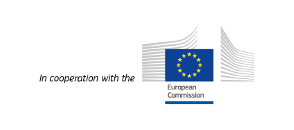Why change must be structural
What is the problem/issue?
As She Figures, published by the European Commission shows, research and innovation (R & I) is highly segregated by gender and marked by considerable gender gaps.
Women and men tend to concentrate in certain scientific fields (horizontal segregation). For example, while women are more likely to be found in fields such as social sciences and humanities, men are more inclined to study, teach and/or research topics related to engineering or technology. In addition, top positions are more frequently occupied by men (vertical segregation) and evidence shows that resources distributed through research funding are not equally accessible to researchers of all genders.
In addition, the significant sex/gender dimension often seems to be disregarded in the approach to and content and analysis of research and teaching. The result is that the viewpoints, experiences and needs of half the population risk being overlooked or dismissed. This also applies to other intersecting inequalities or discriminations, which in turn leads to innovations, products, services and policies that are less than optimal because they are targeted at and serve only a certain proportion of society. To better address these issues, recent research funding programmes, such as Horizon Europe, are starting to demand the integration into research proposals of sex/gender/intersectional analysis as a criterion for research quality.
In order to view videos and webinars or further tools and resources on the topics in this section, switch between the respective tabs. Otherwise, click below to continue to the next section about rationales for promoting gender equality in R & I, which may provide you with arguments to convince your management and colleagues to support your efforts.
- The video on ‘ACT on gender gaps in science’, from the EU-funded project ACT, discusses the main gender gaps between women and men in R & I.
- The video ‘ACT on academic culture’, from the EU-funded project ACT, summarises how organisational culture shapes gender inequalities in R & I.
- The video ‘ACT on gender dimension’, from the EU-funded project ACT, provides you with the main arguments why sex and gender analysis is relevant for knowledge production in R & I.
- The Royal Society has produced an animation that introduces the key concepts of unconscious bias and how you can recognise bias in yourself.
Data and policies on gender equality in research and innovation
- She Figures reports provide data on the European Commission’s gender equality priorities in the field of R & I policy. A methodological handbook has also been published that describes the measurement of different indicators and the data used.
- For the latest edition of She Figures (2021), seven policy briefs were written on emerging and ongoing policy priorities in the area of gender equality in R & I. These policy briefs provide important contextual information for a better interpretation of the data presented in She Figures 2021.
Structural change in research organisations
- The report Analytical Review – Structural change for gender equality in research and innovation summarises the experiences of structural change projects funded under the Seventh framework programme of the European Community for research and technological development (FP7) and Horizon 2020 to promote gender equality in R & I.
- The report Structural Change in Research Institutions – Enhancing excellence, gender equality and efficiency in research and innovation by the European Commission provides the main arguments for structural change and solutions for how to achieve this.
Gender bias in research and innovation
- The policy brief ‘Tackling gender bias in research evaluation: recommendations for action for EU Member States’ by the European Research Area and Innovation Committee (ERAC) Standing Working Group on Gender in Research and Innovation provides an overview of how gender bias influences research evaluations.
- The article ‘In some professions women have become well represented, yet gender bias persists – perpetuated by those who think it is not happening’ shows the persistence of gender bias and how it is reproduced.
- The article ‘How gender and race stereotypes impact the advancement of scholars in STEM: professors’ biased evaluations of physics and biology post-doctoral candidates’ concludes that women are perceived as less competent and less hireable than men.
Gender-based violence and sexual harassment
- The policy brief by the ERAC Standing Working Group on Gender in Research and Innovation entitled ‘Mobilising to eradicate gender-based violence and sexual harassment: a new impetus for gender equality in the European research area’ provides a brief overview of why the topic is highly relevant and recommendations for different stakeholder groups on how to combat gender-based violence in R & I.
- The EU-funded project UniSAFE researches the prevalence of gender-based violence and sexual harassment in European universities and research organisations and will provide evidence-based recommendations and a toolbox for these organisations.
Inclusive workplace culture in research and innovation
- An article by Powell, Terry and Chen (2020), published in the career section of Nature, describes how workplaces in R & I can be inclusive and welcoming for all genders, and especially for sexual and gender minorities (lesbian, gay, bisexual, transgender and others).
Good practices in gendered innovations
- The factsheet on gendered innovations, published by the European Commission, provides a comprehensive overview of why integrating a sex, gender and intersectional analysis into R & I matters.
- For more details on specific case studies and good-practice examples, see the full Gendered Innovations reports published by the European Commission. The first report was published in 2013 and the second in 2020.
